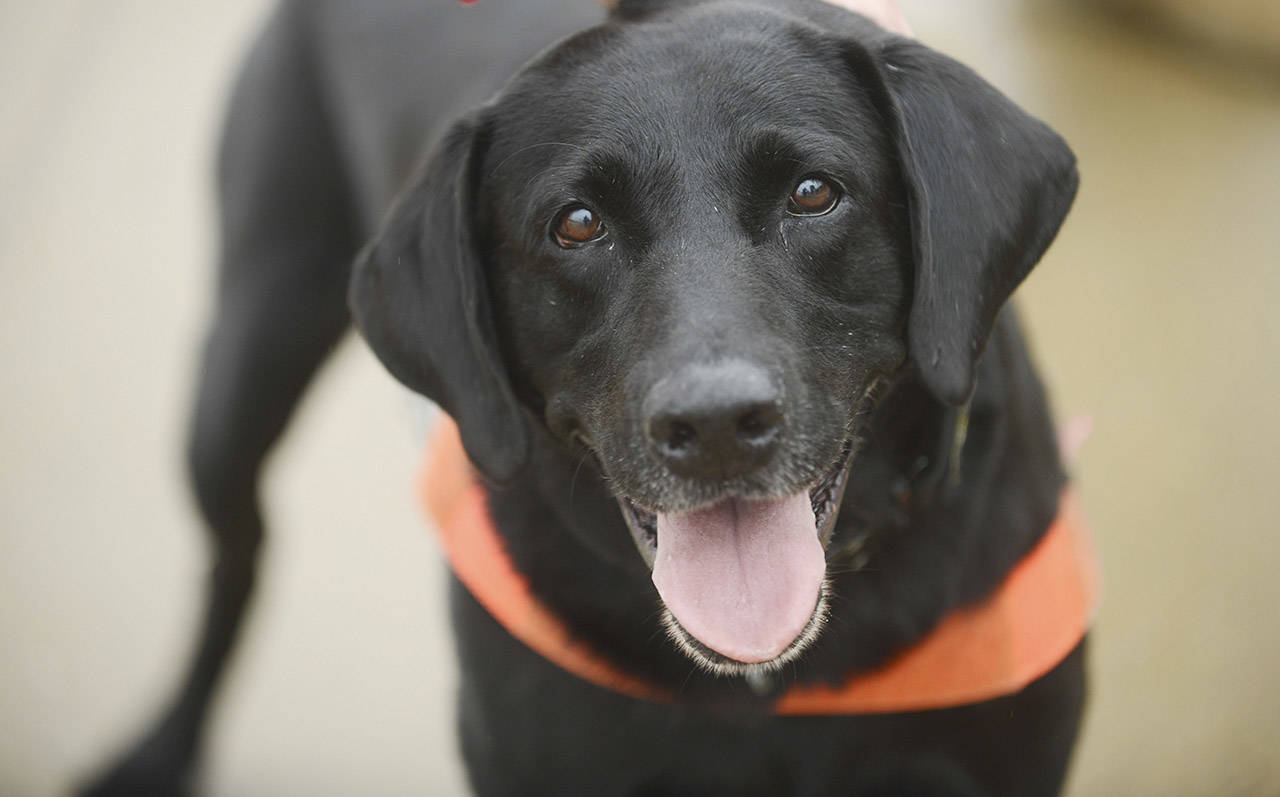By Karin Brulliard / The Washington Post
The dogs deployed by the Transportation Security Administration at airports nationwide use their noses to sniff out explosives and contraband. But pooches selected for duty these days are picked not just for the ability of their snouts — the shape of their ears matters, too.
TSA officials say the agency is increasingly replacing retired pointy-eared dogs — think German shepherds — with floppy-eared sorts including Labrador retrievers. The recruits have a friendlier look, officials say.
“We find the passenger acceptance of floppy-ear dogs is just better. It presents just a little bit less of a concern,” TSA Administrator David Pekoske told the Washington Examiner during a recent tour at Washington Dulles International Airport. “Doesn’t scare children.”
About 1,200 TSA dogs from seven breeds are used to screen U.S. passengers and baggage, TSA spokesman James Gregory told The Washington Post. Five are breeds whose ears rest softly on their heads: Labs, golden retrievers, German short-haired pointers, wire-haired pointers and Vizslas. Two have ears that shoot skyward: German shepherds and Belgian Malinoises.
But about four in five recent additions to the canine corps are of the droopy-eared persuasion, and the agency hopes to stick to that ratio, Gregory said. The consideration of ear position, he added, was an informal internal decision “that is more about adapting to people’s perceptions about floppy-eared dogs (sporting breeds) being more friendly versus pointy-eared dogs (herding dog breeds) that may appear to be more aggressive-looking.”
Working-dog providers are also increasingly opting to breed retrievers and other sporting dogs, Gregory said.
This doggy development made a splash on social media, where some observers greeted it as a welcome gesture from an agency not often lauded for its consideration of traveler sentiments. Others decried it as “canine racism,” not to mention a misplaced focus on dogs when barking TSA agents are a more common complaint, and offered up photos of perfectly nice-looking dogs with pointy ears.
Still others pointed out that these dogs, which typically wear “Do not pet” vests, are not supposed to be approachable.
“No petting, but there’s a balance,” Gregory said. “We don’t want people to shy away because they’re scared.”
The agency’s understanding of passenger views on detection dog ears is anecdotal and not based on survey data, Gregory said. But some research backs up the idea that people view pointy ears as more intimidating. In a 2016 study on perceptions of dogs with docked tails and cropped ears — or cut to stand up, as is typical on breeds such as the Doberman pinscher — University of British Columbia researchers found that participants deemed altered dogs more aggressive and dominant than those with natural features.
Clive Wynne, a University of Arizona canine science scholar who has studied perceptions of dogs labeled “pit bulls,” praised the agency’s move. Detection dogs’ noses are “amazing technology,” he said, “but the fact that this technology is embodied in a living animal creates its own issues.”
“People have attitudes toward dogs — and different attitudes toward dogs that look different,” Wynne said in an email. “So if you want to have a dog contact a vast number of people of many different backgrounds, you need that dog to be presentable to the widest possible range of folks.”
Floppy ears have actually played a significant role in scientists’ understanding of animals’ friendliness toward humans. In an experiment that began in 1959 and continues today, scientists in Russia have sought to breed tame silver foxes. They selected the gentlest animals to start each new generation, and within 10 cycles, they had pups that were less aggressive and fearful. What’s more, these amiable foxes sported new physical characteristics, including curly tails, mottled fur — and yes, floppy ears. The same traits are seen in many domesticated animals.
Why these physical traits often accompany tameness is not yet clear. But it means that humans have for thousands of years associated them with more docile animals. That said, German shepherds, Belgian Malinoises and other triangle-eared breeds are no less domesticated or tame than others. All purebred dogs’ looks, including their ears, have been shaped by selective breeding, and erect ears do not necessarily signal an aggressive temperament.
Nor do traditional detection dogs necessarily have stronger sniffers. Wynne noted that a study he published on dogs’ olfactory sensitivity found that pugs performed “way better” than German shepherds, meaning “friendly-looking dogs can be perfectly suited to this task.”
Which is why the primary requirement for TSA dogs remains stellar detection skill, Gregory said. As many as half of aspiring working dogs fail out of training programs; in 2017, a very floppy-eared black Lab named Lulu became a minor celebrity for dropping out of CIA bomb-sniffer school.
“No dogs will be pulled off because they have pointy ears. All the dogs are good — as long as they pass the test,” Gregory said. “It’s stringent, and we put them through extremely difficult tests… . But at the end of the day, the dog’s going to be out there because they’re qualified, not because of their breed.”
Talk to us
> Give us your news tips.
> Send us a letter to the editor.
> More Herald contact information.

























